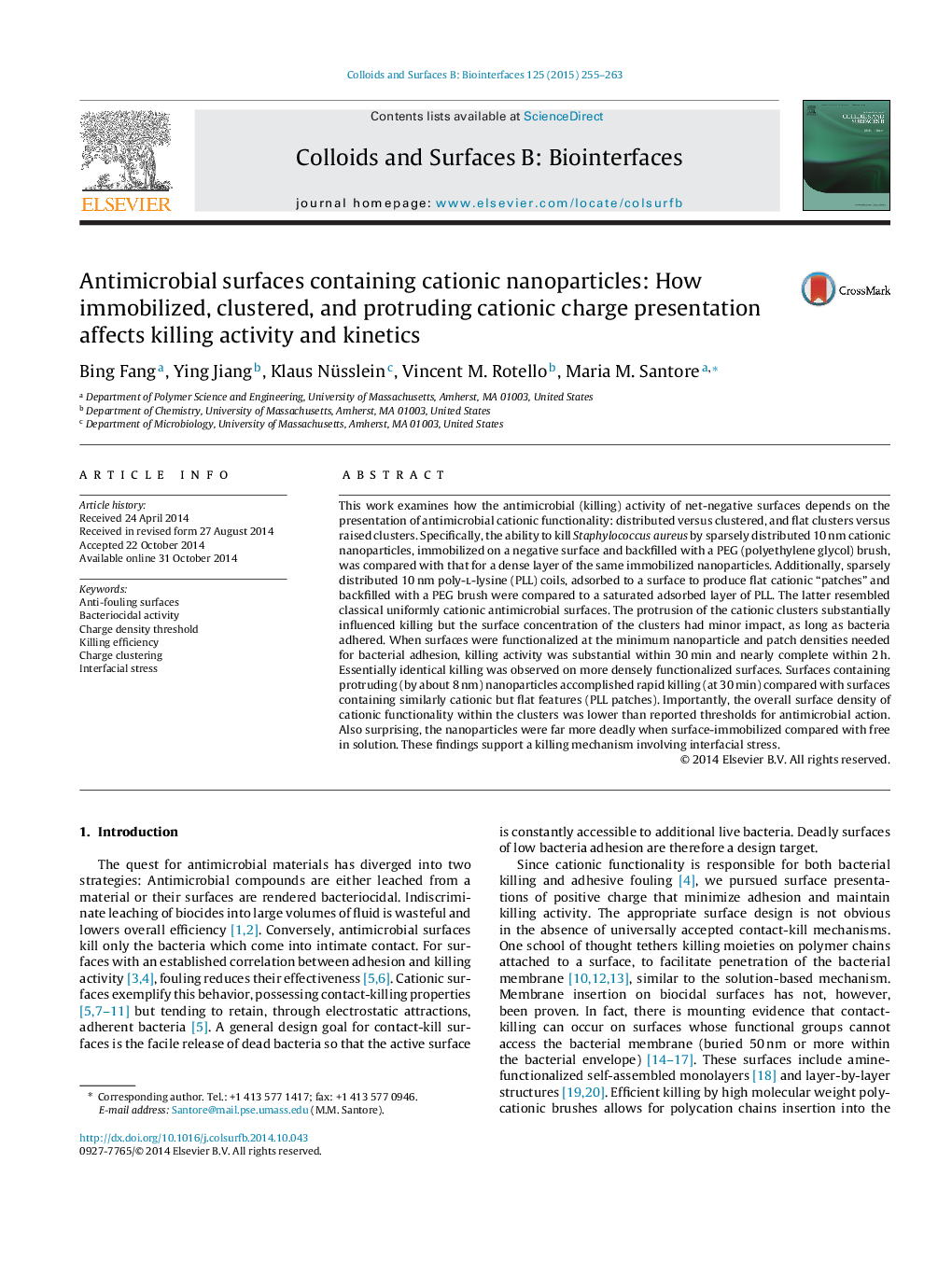| کد مقاله | کد نشریه | سال انتشار | مقاله انگلیسی | نسخه تمام متن |
|---|---|---|---|---|
| 599591 | 1454279 | 2015 | 9 صفحه PDF | دانلود رایگان |
• S. aureus are readily killed on surfaces containing nanoscopic cationic clusters.
• Surfaces contained cationic nanoparticles or polycations in a PEG brush.
• S. aureus die faster when clusters protrude ∼10 nm compared with a flat presentation.
• Cationic nanoparticles kill S. aureus better when surface-immobilized rather than free.
This work examines how the antimicrobial (killing) activity of net-negative surfaces depends on the presentation of antimicrobial cationic functionality: distributed versus clustered, and flat clusters versus raised clusters. Specifically, the ability to kill Staphylococcus aureus by sparsely distributed 10 nm cationic nanoparticles, immobilized on a negative surface and backfilled with a PEG (polyethylene glycol) brush, was compared with that for a dense layer of the same immobilized nanoparticles. Additionally, sparsely distributed 10 nm poly-l-lysine (PLL) coils, adsorbed to a surface to produce flat cationic “patches” and backfilled with a PEG brush were compared to a saturated adsorbed layer of PLL. The latter resembled classical uniformly cationic antimicrobial surfaces. The protrusion of the cationic clusters substantially influenced killing but the surface concentration of the clusters had minor impact, as long as bacteria adhered. When surfaces were functionalized at the minimum nanoparticle and patch densities needed for bacterial adhesion, killing activity was substantial within 30 min and nearly complete within 2 h. Essentially identical killing was observed on more densely functionalized surfaces. Surfaces containing protruding (by about 8 nm) nanoparticles accomplished rapid killing (at 30 min) compared with surfaces containing similarly cationic but flat features (PLL patches). Importantly, the overall surface density of cationic functionality within the clusters was lower than reported thresholds for antimicrobial action. Also surprising, the nanoparticles were far more deadly when surface-immobilized compared with free in solution. These findings support a killing mechanism involving interfacial stress.
Figure optionsDownload as PowerPoint slide
Journal: Colloids and Surfaces B: Biointerfaces - Volume 125, 1 January 2015, Pages 255–263
